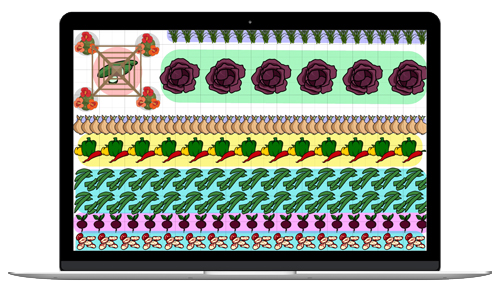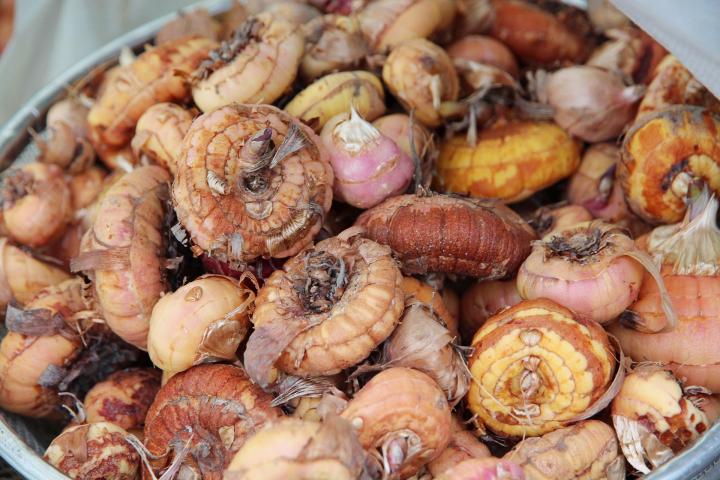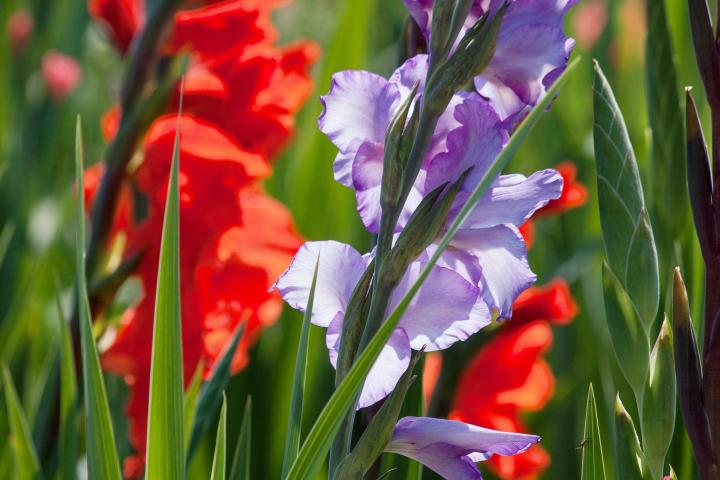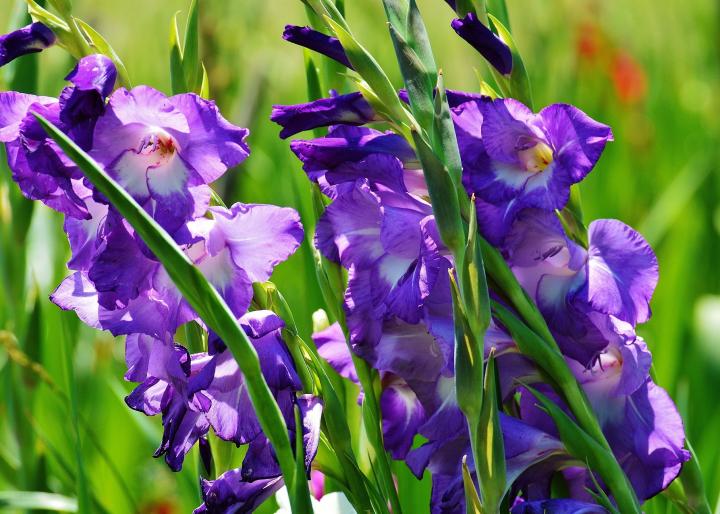
Planting, Growing, and Caring for Gladiolus
The Almanac Garden Planner - Use It Free for 7 Days!
Plan your 2025 garden with our award-winning Garden Planner.
Types
Gladioli come in a variety of sizes and colors, with the most popular being part of the following hybrid groups:
- Grandiflora Hybrids: These are the classic gladioli that produce a plentiful amount of large (5- to 6-inch) blooms in a range of colors. The plants produce flower stalks that reach up to 4 feet in height and are winter hardy to Zone 7.
- Dwarf Grandiflora Hybrids: These miniature glads are an excellent choice for containers and cutting gardens, as their flowers are about half the size of Grandifloras, and their shorter stalks don’t typically require staking. They are also winter hardy to Zone 7. Glamini gladioli are included in this group; they are pest-resistant and will bloom in full sun or partial shade.
- Nanus Hybrids: Hardy to Zone 5, these smaller gladioli look a lot like Grandifloras, but do not produce as many flowers. They tend to grow no larger than about 2 feet in height, which makes them perfect for containers or small spaces.
Some specific gladiolus varieties of note include:
- ‘Black Star,’ which has deep purple-red blooms
- ‘Candyman,’ for its beautiful, deep pink flowers
- ‘Costa,’ which sports ruffled flowers in blue-purple
- ‘Dream’s End,’ which makes a good background plant because its flower spike is up to 3 feet tall (and it has pretty light orange flowers with large yellow centers)
- ‘Fun Time,’ which has yellow flowers edged with red
- ‘Green Time,’ for its unusual lime-green flowers
- ‘Prins Claus,’ which has white flowers with splashes of pink on its petals
- ‘Priscilla,’ which produces off-white flowers with a yellow center and a pink edge
ADVERTISEMENT
I planted about 20 corms a couple of years ago and only a few came up and have continued to come up, this is their 3rd season. I noticed this year that a couple of the plants seem like they have another plant growing directly next to it. Do Glads produce additional corms and if so, do they need separated like other bulb plants?
Hi Paula,
Yes, that is new growth (called a cormlet or cormel)—and a sign of healthy, happy glads! They are next year’s root stock. Gladiolus grow from new corms that form on top of the old corm, which dies after a year.
I live on the coast of Washington State. In April or May, (can't remember exactly when) I planted about 30 corms, in individual holes, along the sunny edge of my back deck. Each hole was filled with Miracle Grow planting soil and about a teaspoon of bone meal. Its now the middle of July and all I have are leaves, varying from 12-24" high. no evidence of stalks or flowers. Any ideas?
Hi Ted,
I wonder if they were planted too deep and/or the corms are too wet. Once the foliage dies back this year, dig and reset them for next year. They should be 3 to 5 inches deep.
Hello:
I have three dozen glad bulbs that were intended for planting this spring. We needed to dig up a water line and so garden planting in this location was put on hold. We are located in Hardiness zone 5b.
Should I try to plant these now in mid-July or can I just keep them and plant them next spring? If this is the better option, please advise how best to store the corns/bulbs between now and spring 2017.
Thank you.
Hi Jean (and JB),
At this point in the season, it would probably be best to store them for planting next spring. Cut off any remaining foliage and make sure corms are good and dry. Cure them for two weeks in a warm, airy location. Then, remove the small cormels, keeping the largest of the corms. Tie them into a mesh sack in a well-ventilated room kept at a consistent temperature somewhere between 35 and 50 degrees Fahrenheit. They should be good to go next year!
I have EXACTLY the same question!
We want to dig up a few of our plants to share with a friend, who will share some theirs (different colors than we have). When/how do we do this?
Hi Ginny,
Wait about six weeks after the plants are done blooming. Then, use a spade fork to gently loosen and lift the soil around the corms (be mindful not to puncture them). Pull them out, give them a rinse, let them dry in the sun, and swap away!
why are my flowers dying as soon as they bloom,and why are the stalks leaning over and breaking,is there a certain way to plant,mine are at the end of my yard in a straight line ,should they be planted more of a bush like plant













